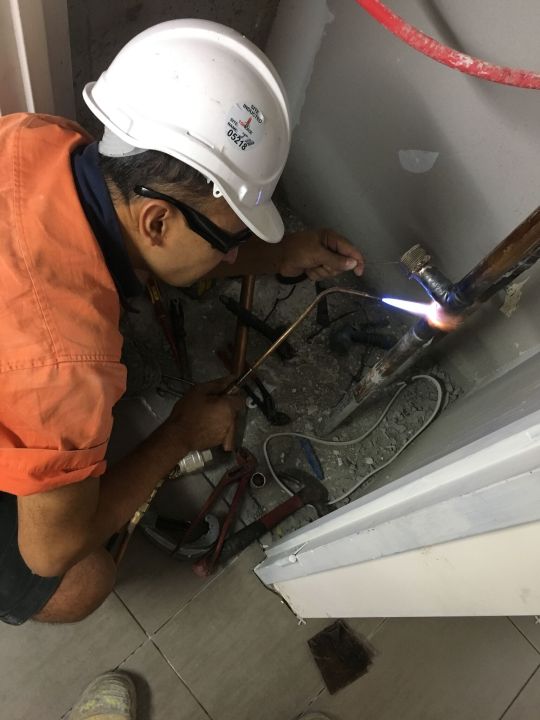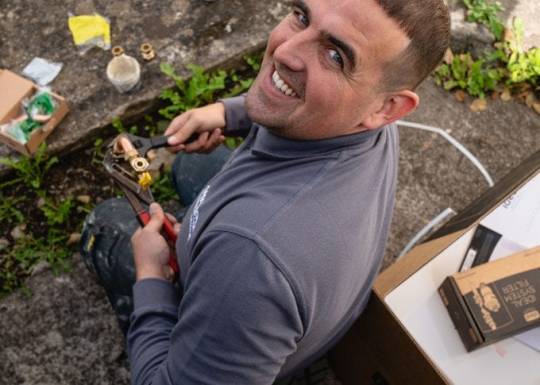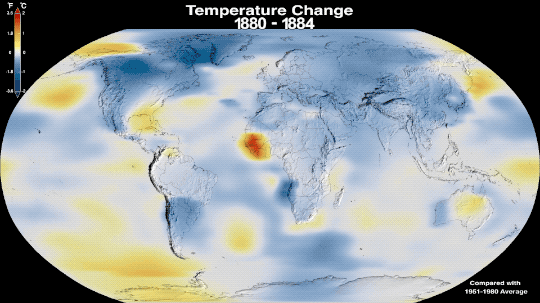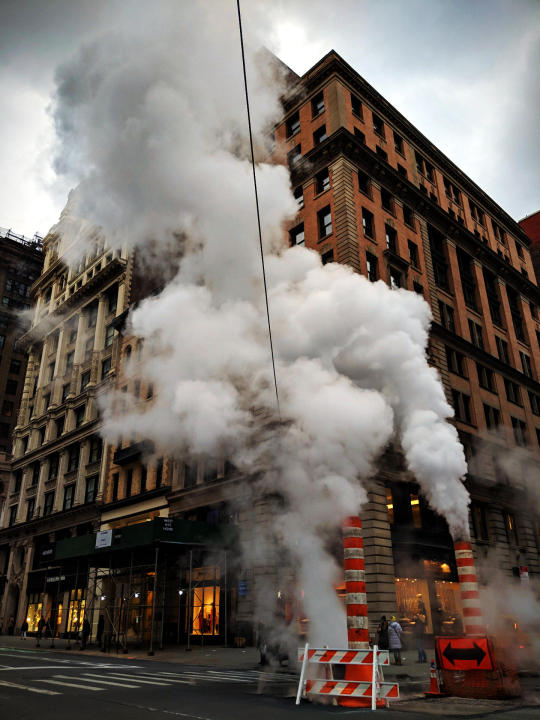#gas central heating systems
Photo

At JM Plumber & Heating in Cranbourne, we understand that plumbing problems can be a real pain. That's why we offer a wide range of plumber cranbourne services to make your life easier. From taps and leaks to blocked drains and hot water system repairs, we've got you covered.
Our experienced and professional plumbers are available 24/7 to help you with any plumbing problem. So we've got you covered if you need an emergency plumber in the middle of the night or a general plumbing service during the day.
Our Services
- Leaking Tap Repair And Replacement
- Pumps Repair And Installations
- Pipe Repair Installation
- Plumbing Maintenance
- Drain Cleaning
Heating Services
- Hydronic Heating
- Gas Hot Water Repair
- Heating Repairs
- Thermostats
- Gas Central Heating Systems
- Other Services
For all your needs plumbing in Cranbourne, contact JM Plumber & Heating today!
#plumber Cranbourne#plumbing services in Cranbourne#plumbing cranbourne#plumber in cranbourne#leaking tap repair and replacement#pumps repair and installations#pipe repair installation#plumbing maintenance#drain cleaning#hydronic heating#gas hot water repair#heating repairs#thermostats#gas central heating systems
0 notes
Text

If you're living in a property without central heating, you could be eligible for a free central heating system installation under this scheme. Say goodbye to chilly winters and hello to cozy warmth in your home—all at no cost to you!
#central heating system#first time central heating grants#free central heating installation#gas central heating grants
0 notes
Text
Ducted Heating Bowral | Ducted Heating Mittagong | Tempco Energy Solutions

#mittagong air conditioning#heat pump hot water system bowral#air conditioning mittagong#duced air condition in borwal#gas central heating southern highlands
0 notes
Text
Best Dublin Plumbing Services
Dublin, A city of vibrant streets, Guinness galore, and… plumbing emergencies? Fear not, weary citizen, for MPH Plumbing & Heating is your knight in Dublin Plumbing Services, shining boilers, ready to conquer even the most villainous leaks and blockages!

More Than Just Pipes:
While fixing leaky faucets and unclogging drains is our plumbers’ forte, we at MPH are much more than just wrench-wielding warriors. We’re home comfort architects, crafting solutions that turn your Dublin abode into a haven of tranquility and warmth.
Our Arsenal of Expertise:
Emergency Plumbing: Burst pipes got you in a tizzy? We’re Dublin’s leak-stopping SWAT team, arriving swiftly to quell the deluge and restore order to your waterworks.
Boiler Battles: Is your heating system singing the blues? Our boiler whisperers diagnose and rectify any thermal woes, ensuring your home stays toasty even on the frostiest Dublin mornings.
Bathroom Bliss: Cracked tiles and malfunctioning faucets? We’re bathroom renovation alchemists, transforming your tired tub into a spa-worthy sanctuary.
Central Heating Champions: From power flushing to system upgrades, we keep your central heating humming like a finely tuned Irish jig, banishing chills and embracing cozy contentment.
Gas Safe Guardians: We treat gas with the utmost respect, ensuring your appliances operate safely and efficiently, keeping you and your loved ones warm and worry-free.
What Makes Us Dublin’s Finest Fixers?
Expertise That Runs Deep: Our team boasts years of experience tackling Dublin’s diverse plumbing and heating challenges. We’ve seen it all, from temperamental Victorian radiators to quirky modern marvels, and we have the know-how to conquer them all.
Emergency Speed, Friendly Deed: Plumbing emergencies don’t wait for business hours. That’s why we offer 24/7 emergency callouts, ensuring a friendly face arrives promptly to banish your woes.
Transparency Above All: We believe in clear communication and upfront pricing. No hidden fees, no cryptic diagnoses — just honest advice and transparent quotes so you can relax and focus on what matters most.
Community Champions: We’re proud to be Dubliners, through and through. We support local businesses, sponsor community events, and treat every customer like a neighbor, not just a number.
So, the next time your pipes cry foul or your boiler throws a tantrum, don’t despair! Just remember, Dublin has a hero — MPH Plumbing & Heating. We’ll be there, wrench in hand, ready to restore harmony to your home and leave you singing hymns of praise (or at least humming a happy tune in a toasty shower).
Contact MPH Plumbing & Heating today and let us be your Dublin plumbing and heating services.
#gas engineer near me#plumbing deansgrange#dublin plumbing services#plumber dublin#Plumber near me#central heating system installation#heating system installation#gas heating system installation#central heating system dublin#Gas Boiler Installation#Gas Boiler Installation Dublin#gas boiler replacement#gas boiler replacement dublin#Gas Boiler Repair#gas boiler repair dublin#gas boiler repair near me#gas boiler repair service#emergency plumbing repair#24 hour emergency plumbing#emergency plumbing service#emergency plumber dublin#gas boiler service dublin#gas boiler service near me#Gas Boiler Service#power flushing dublin#plumbing repair#plumbing repair near me#plumbing repairs dublin
1 note
·
View note
Text
What are the uses of Smart Gas Ducted Heating Technology?

There are many benefits that you can draw from Gas Ducted Heating Installation in Melbourne. A good smart gas ducted heating technology installation can heat up your home and give you a comfortable environment to live in. There are many reasons why you should use a smart gas ducted heating system in your house. The benefits are mentioned in this article for your convenience.
What are the benefits of using Smart Gas Ducted Heating Technology in your air conditioner?
All year round heating
If you are living in a cold country where you get all year cold conditions, you can use a Hitech Air Solution for heating your home. The smart gas ducted heating technology keeps your home warm throughout the year. While the system keeps your house warm, it does not use a lot of energy which is a great advantage of the Evaporative Cooling Installation in Melbourne.
Breathe in clean air
The smart gas ducted heating technology can be used in air conditioners and when it is used in conditioners and purifiers, it provides the user clean, allergen less air. Nowadays, since we live in areas with bad air quality, breathing in clean air is more important than ever. For a healthy lifestyle, using a good purifier and conditioner with the smart gas ducted heating technology is important. Since it creates clean, purified air, you also do not have to do Air Conditioning Maintenance in Melbourne frequently.
Cost effective
Air conditioners with smart gas ducted heating technology are highly cost effective because they do not utilize a lot of energy. If you are thinking about skipping the heating technology because of additional costs, you do not have to worry because you do not have to spend a lot to get it installed. The smart gas ducted heating technology are easy to install and can save you a lot of money. You can talk to a good heating installation company for complete Water Heater Repair and Installation Melbourne.
Conclusion
A smart gas ducted heating technology has multiple advantages and is easy to use. The installation and maintenance costs for this system are also very low. A smart gas ducted heating technology integrated heater can be used for air or water heating. Depending on your seasonal and yearlong needs, you can opt for the gas heating system to be integrated into your smart home.
#Split Air-Conditioning Installation Melbourne#Split Air-Conditioning Repair and Service Melbourne#Evaporative Cooling Installation Melbourne#Evaporative Cooling Commercial and Residential Repair and Service Melbourne#Ducted Fixing Melbourne#Ducted Refrigeration Heating and Cooling Installation and Service Melbourne#Central Ducted Heating and Cooling Melbourne#Gas Ducted Heating Service and Repair Melbourne#Air Conditioning Repair Melbourne#Gas Ducted Heating Installation Melbourne#Aircon Repair Shop Melbourne#Aircon Installation Company Melbourne#Hot Water System Repair and Installation Melbourne#Duct Work Installation Melbourne#Air Conditioning Maintenance Melbourne#Gas Structured Heating Melbourne#Gas Ducted Heating Melbourne#Reverse Cycle Heating and Cooling Melbourne#Reverse Cycle Ducted Heating and Cooling Melbourne#Ducted Refrigerated Reverse Cycle Heating and Cooling Melbourne#Heating Repair Melbourne#VRV Repair Service Melbourne#Commercial Cooktop Repair Melbourne#Commercial Fryer Repair Melbourne#Commercial Kitchen Equipment Repairs Melbourne#Commercial Deep Fryer Repairs Melbourne#Water Heater Repair Melbourne#Water Heater Installation Melbourne#Hot Water System Repairs Melbourne#Water Heater Repair and Installation Melbourne
1 note
·
View note
Text
Learn what a gas engineer recommends about central heating flushing devices. Get expert insights for efficient system maintenance.
0 notes
Text
"The amount of electricity generated by the UK’s gas and coal power plants fell by 20% last year, with consumption of fossil fuels at its lowest level since 1957.
Not since Harold Macmillan was the UK prime minister and the Beatles’ John Lennon and Paul McCartney met for the first time has the UK used less coal and gas.
The UK’s gas power plants last year generated 31% of the UK’s electricity, or 98 terawatt hours (TWh), according to a report by the industry journal Carbon Brief, while the UK’s last remaining coal plant produced enough electricity to meet just 1% of the UK’s power demand or 4TWh.
Fossil fuels were squeezed out of the electricity system by a surge in renewable energy generation combined with higher electricity imports from France and Norway and a long-term trend of falling demand.
Higher power imports last year were driven by an increase in nuclear power from France and hydropower from Norway in 2023. This marked a reversal from 2022 when a string of nuclear outages in France helped make the UK a net exporter of electricity for the first time.
Carbon Brief found that gas and coal power plants made up just over a third of the UK’s electricity supplies in 2023, while renewable energy provided the single largest source of power to the grid at a record 42%.
It was the third year this decade that renewable energy sources, including wind, solar, hydro and biomass power, outperformed fossil fuels [in the UK], according to the analysis. Renewables and Britain’s nuclear reactors, which generated 13% of electricity supplies last year, helped low-carbon electricity make up 55% of the UK’s electricity in 2023.
[Note: "Third year this decade" refers to the UK specifically, not global; there are several countries that already run on 100% renewable energy, and more above 90% renewable. Also, though, there have only been four years this decade so far! So three out of four is pretty good!]

Dan McGrail, the chief executive of RenewableUK, said the data shows “the central role that wind, solar and other clean power sources are consistently playing in Britain’s energy transition”.
“We’re working closely with the government to accelerate the pace at which we build new projects and new supply chains in the face of intense global competition, as everyone is trying to replicate our success,” McGrail said.
Electricity from fossil fuels was two-thirds lower in 2023 compared with its peak in 2008, according to Carbon Brief. It found that coal has dropped by 97% and gas by 43% in the last 15 years.
Coal power is expected to fall further in 2024 after the planned shutdown of Britain’s last remaining coal plant in September. The Ratcliffe on Soar coal plant, owned by the German utility Uniper, is scheduled to shut before next winter after generating power for over 55 years.
Renewable energy has increased sixfold since 2008 as the UK has constructed more wind and solar farms, and the large Drax coal plant has converted some of its generating units to burn biomass pellets.
Electricity demand has tumbled by 22% since its peak in 2005, according to the data, as part of a long-term trend driven by more energy efficient homes and appliances as well as a decline in the UK’s manufacturing sector.
Demand for electricity is expected to double as the UK aims to cut emissions to net zero by 2050 because the plan relies heavily on replacing fossil fuel transport and heating with electric alternatives.
In recent weeks [aka at the end of 2023], offshore wind developers have given the green light to another four large windfarms in UK waters, including the world’s largest offshore windfarm at Hornsea 3, which will be built off the North Yorkshire coast by Denmark’s Ørsted."
-via The Guardian, January 2, 2024
#uk#united kingdom#england#scotland#wales#northern ireland#electricity#renewables#renewable energy#climate change#sustainability#hope posting#green energy#fossil fuels#oil#coal#solar power#wind power#environment#climate action#global warming#air pollution#climate crisis#good news#hope
386 notes
·
View notes
Text
Why Isn’t Every Year the Warmest Year on Record?
This just in: 2022 effectively tied for the fifth warmest year since 1880, when our record starts. Here at NASA, we work with our partners at NOAA to track temperatures across Earth’s entire surface, to keep a global record of how our planet is changing.
Overall, Earth is getting hotter.

The warming comes directly from human activities – specifically, the release of greenhouse gases like carbon dioxide from burning fossil fuels. We started burning fossil fuels in earnest during the Industrial Revolution. Activities like driving cars and operating factories continue to release greenhouse gases into our atmosphere, where they trap heat in the atmosphere.

So…if we’re causing Earth to warm, why isn’t every year the hottest year on record?
As 2022 shows, the current global warming isn’t uniform. Every single year isn’t necessarily warmer than every previous year, but it is generally warmer than most of the preceding years. There’s a warming trend.
Earth is a really complex system, with various climate patterns, solar activity, and events like volcanic eruptions that can tip things slightly warmer or cooler.
Climate Patterns
While 2021 and 2022 continued a global trend of warming, they were both a little cooler than 2020, largely because of a natural phenomenon known as La Niña.
La Niña is one third of a climate phenomenon called El Niño Southern Oscillation, also known as ENSO, which can have significant effects around the globe. During La Niña years, ocean temperatures in the central and eastern Pacific Ocean cool off slightly. La Niña’s twin, El Niño brings warmer temperatures to the central and eastern Pacific. Neutral years bring ocean temperatures in the region closer to the average.

El Niño and La Niña affect more than ocean temperatures – they can bring changes to rainfall patterns, hurricane frequency, and global average temperature.
We’ve been in a La Niña mode the last three, which has slightly cooled global temperatures. That’s one big reason 2021 and 2022 were cooler than 2020 – which was an El Niño year.
Overall warming is still happening. Current El Niño years are warmer than previous El Niño years, and the same goes for La Niña years. In fact, enough overall warming has occurred that most current La Niña years are warmer than most previous El Niño years. This year was the warmest La Niña year on record.

Solar Activity
Our Sun cycles through periods of more and less activity, on a schedule of about every 11 years. Here on Earth, we might receive slightly less energy — heat — from the Sun during quieter periods and slightly more during active periods.

At NASA, we work with NOAA to track the solar cycle. We kicked off a new one – Solar Cycle 25 – after solar minimum in December 2019. Since then, solar activity has been slightly ramping up.
Because we closely track solar activity, we know that over the past several decades, solar activity hasn't been on the rise, while greenhouse gases have. More importantly, the "fingerprints" we see on the climate, including temperature changes in the upper atmosphere, don't fit the what we'd expect from solar-caused warming. Rather they look like what we expect from increased greenhouse warming, verifying a prediction made decades ago by NASA.
Volcanic Eruptions
Throughout history, volcanoes have driven major shifts in Earth’s climate. Large eruptions can release water vapor — a greenhouse gas like carbon dioxide — which traps additional warmth within our atmosphere.
On the flip side, eruptions that loft lots of ash and soot into the atmosphere can temporarily cool the climate slightly, by reflecting some sunlight back into space.
Like solar activity, we can monitor volcanic eruptions and tease out their effect on variations in our global temperature.

At the End of the Day, It’s Us
Our satellites, airborne missions, and measurements from the ground give us a comprehensive picture of what’s happening on Earth every day. We also have computer models that can skillfully recreate Earth’s climate.
By combining the two, we can see what would happen to global temperature if all the changes were caused by natural forces, like volcanic eruptions or ENSO. By looking at the fingerprints each of these climate drivers leave in our models, it’s perfectly clear: The current global warming we’re experiencing is caused by humans.
For more information about climate change, visit climate.nasa.gov.
Make sure to follow us on Tumblr for your regular dose of space!
3K notes
·
View notes
Text
I think the thing that's important for us to remember is that cost volatility is actually all about fossil fuel dependency.
The more that we are dependent on fossil fuels, it means the more we are dependent on global events. As we saw with Russia's invasion of Ukraine, as we see with the choices that come out of the UAE, as well as many other regions of the world, oil and gas development and drilling in Latin America, as well as in the United States. The more dependent we are on oil and gas, the more crazy our prices are going to be, and the more up and down our prices are going to be. And the fact that, for example, we have not developed electric or alternative energy vehicles earlier is one of the reasons why we pay such close attention to gas prices to begin with.
And we would not be as sensitive to the changes in energy costs if we weren't so fossil fuel dependent.
And Donald Trump knows that.
The oil and gas industry knows that.
And that is why they finance huge parts of lobbying our government in order to keep the country entirely dependent on fossil fuels.
Now, if you prefer gas cars and gas stoves, you're free to make that choice.
But what we haven't had is accessible and broad choices for something else. EVs have been in development, but for a very long time, they've been financially inaccessible to a lot of people in this country. The Inflation Reduction Act helped change that. We got huge tax breaks for both new and used EVs. If you're trying to buy one off your neighbor or whatever that may be, as well as many other things that are accessible, whether it's induction stoves, heat pumps for one's home, et cetera. But the oil and gas industry is deploying all of their political and special interest money towards one central goal, which is to keep virtually every American completely dependent on their product.
And Donald Trump is very closely aligned with them.
And not only that, but the larger point is that it's not a coincidence that his authoritarian tactics are tied to fossil fuels.
This is a global phenomenon.
And what we are seeing is authoritarianism is very, very closely linked with oil and gas interests around the world.
That's Putin, that's Trump. That's folks like Bolsonaro. That's a lot of the political instability we see out of Saudi Arabia, the UAE.
And I believe that it is not a coincidence, because you have one central industry that has a clear vested, both political and financial interest, and an authoritarian…that is also increasingly becoming politically unpopular, by the way, because the vast majority of Americans believe that the U.S. should start winding down our subsidization of the fossil fuel industry. They want to see clean energy alternatives available to them and financially accessible to them. And they understand that it's just more volatile to be so chained to fossil fuels.
And so the only way that you can really empower both financially a political sect, is through the fossil fuel industry, the oil and gas industry.
The Koch brothers are an oil and gas dynasty who had such large influence on our political system. They come from an oil and gas dynasty, or rather, came. One of them has passed, there's that, but then you see that link crossing across the world, and the ascent of authoritarianism, paired with the fact that every single one of them is very closely aligned to the fossil fuel industry.
And the ascent of the fossil fuel industry is not a coincidence. It's not a mistake.
And in fact, the democratization of our energy system, which is a means of production that has been privatized and concentrated into the hands of the very few, the democratization of our energy system means that people have the potential. We're doing this in Puerto Rico. When you have a battery pack on your house, when the power goes out, you're not as dependent on a central system. You have a backup reserve in case of an emergency, you can give energy to your neighbor.
This is what the democratization of our energy system looks like.
This is also what a fairer economic system that is less volatile for everyday people looks like as well.
And that is a direct threat to authoritarianism.
It's a direct threat to the extreme concentration of wealth in the hands of the very few.
But it also represents a shift for the betterment of mankind and our democracy.
—Alexandria Ocasio-Cortez, noting the link between the fossil fuel industry and authoritarian regimes
#politics#aoc#alexandria ocasio cortez#authoritarianism#fossil fuels#green energy#gnd#green new deal#capitalism#renewable energy#solar power#green power#gas and oil#fossil fuel dependency
61 notes
·
View notes
Text
To create a sustainable climate, we cannot keep using the same types and amounts of air conditioning.
Central ACs especially accelerate the climate crisis both overall and locally, raising the temperature in air conditioned cities by as much as 10 degrees, not to mention the overall greenhouse gas effect.
Me being extremely heat sensitive due to physical disability doesn't change that reality.
Ignoring it just because I personally am worried about staying cool would be short sighted. As the climate crisis worsens, ACs won't be able to keep up anyways! As price gouging capitalism gets worse, it's possible poor people (huge overlap with disabled people—I'm both!) will have even less access to AC anyways!! Power grid blackouts mean you can't use your AC even if you have it!!
Not to mention how bad it is for people stuck outdoors where ACs are cooking the city even hotter!!
I might get sick or die from overheating if everything stays the same!! We need other options!!
There are ways of cooling that aren't AC.
Individually, most of us probably don't have much choice about implementing many of them.
For instance, houses in the US are built mostly to retain heat, even in hot places, because European settlers wanted familiar house types and when ACs became available those same settlers moved en masse to even hotter places, and even more European-style homes were built there, with AC built in to many of them.
Now we're here, most of us can't afford to build or remodel a whole house. Changing architecture to be cooling IS possible though—it just requires more than individual choices.
Also, public green spaces and waterways are known to reduce heat. Asphalt makes cities hotter, green spaces and open water cool the area.
Cars are another obvious source of local heat. A robust public transit system reducing the number of cars on the road would make us all need less AC.
The conversation isn't about asking disabled people to turn off our ACs and just die.
We need to engage in collective action to make other types of cooling possible.
We need to be creative and collaborative and not just throw up our hands and say the only options are to keep burning up the earth with ACs, or giving them up with no alternative.
People telling you about a problem are giving you an opportunity to be part of brainstorming solutions.
When someone points out that something you need to survive is not sustainable, don't just jump to "they want me to die then". Maybe it just means we need to work together to figure out how to meet all our needs in a sustainable way!!
And yeah, if you can safely turn the AC a degree or two warmer or leave it off some days, that would be great! Every little bit helps!! But we need to be focused on big, systemic solutions and work together to make them happen.
#climate crisis#the amount of people calling people eugenicist for pointing out AC isn't sustainable... come ON#thatdiabolicalfeminist
89 notes
·
View notes
Note
Are we still clowning on the anons trying to tell you how awful living in Europe is? Because I (a USian) saw them spouting nonsense and was like 'Those who live in glass houses should not throw stones'. Several communities there do not have access to safe drinking water at all. Texas's insistence on building their own electric grid incompatible with the rest of the country's meant that about 246 died in the 2021 winter storm. I'm trying to move to the land of bones because the US? YIKES
The US is not without its problems infrastructure wise, yes. I don't think any country is in all honesty.
Though, I think I should address how anon seemed to be getting wires crossed about the situation in Europe:
Most homes here are maybe 100 years old at most, some 150 ish, but most only 40-70 years (something something rebuilding after two world wars). Of course, you get ones built earlier that people still live in. I've known several people in my life who lived in 16th century built homes with thatched roofs. My own home is about 60 years old.
'The buildings are crumbling' yeah, they're old...so they will. But they're not falling down so there's no issue. We make repairs!
Despite their age they do have all the mod cons! Yes, including the 16th century farm houses! You see with continuous settlement people repair and renovate the existing homes, so over the years things like electricity/central heating/plumbing etc have been added.
That said, depending on when stuff like electricity and plumbing was installed it can fail. Anon said that anecdotally a socket had blown. This could be due down to age. However, it can also be down to an american adapter being the wrong voltage for the european plug socket. That tends to make them short out. I've had two american friends at uni who had plug sockets short out on them when arriving in the UK because they used the wrong voltage adapters. Nothing to do with the wiring. Mostly to do with no checking voltage requirements. I've had to do the same when holidaying on the continent. If I take the wrong one I'm gonna damage something.
While central heating and air con are in abundance in Europe, not everyone needs air con. In Northern Europe, before climate change, we experience cold winters but mild summers so our homes needed good central heating and thick walls to keep the heat in. Which they have! However, now climate change is upon us...imagine living in a house where the walls are thick and trap heat but it's 40c outside and you don't have air con still because it's still too expensive a thing to install for 3 weeks use a year at best. That's why anon has seen Europeans complaining about being too hot. The temperatures are record breaking high, and because it's not normal for it to be like that we don't have air con. Southern Europe, where it's much warmer, is where homes more regularly have air con. Pretty much every commercial building, regardless of location or age, has some sort of air conditioning and central heating system.
The 'europeans don't have central heating' probably comes from the posts about how most of us are going to freeze to death this winter due to fuel prices/shortages. We have central heating, we just can't afford to put it on. Thanks to Pusheen (fameux dictateur Russe) invading Ukraine, gas prices in Europe have gone through the roof. In the winter I used to pay £75 for gas and electric per month. Now, I pay £120 for gas alone. I live alone. My consumption is less (I halved the time I have the heating on to save money so it's -3c and I only have the heating on 2 hours a day). Many more people are in a worse off state than me. They can't afford to heat their homes at all. Add in inflation, which has pushed food prices sky high, recession, and stagnant wages, and people are dying from not being able to put the heating on. They've got it anon, but they can't afford to use it and also eat.
Moving to the 'move somewhere without bones' part of it all. Europeans are fine digging up bones and mosaics. Happens all the time, I've no idea why anon thinks we'd need to move or why we'd be mad about it. It's our history! Part of continuously living in an area for centuries means that inevitably when you dig down for foundations you're gonna find bones. That's where the Archaeologists come in! Laws here dictate that an archaeological survey must be conducted on any build site, so that if there is something there it can be properly recorded! This is so we don't end up with what we currently have where it's like 'nope no idea what's down there' and the surprise is a WWII bomb or a roman cemetery, or even a plague pit.
Actually that last one is one I've experienced. When I was looking into archaeology as a degree I went to a dig site for a new shopping centre where they'd discovered victorian ruins, a medieval abbey destroyed by Henry VIII, and a plague pit all on the same site. An absolutely wild time. These guys had to be moved or secured before the actual building work could commence. You can still go down and see the plague pit if you know the right people because the building was built in a way that preserved it.
Anyway, the digging of graves is where everyone seems to get funny with regards to archaeology. They'll accuse archeologists of grave robbing or disturbing the dead and that's so far from the truth it's unreal.
Firstly, there's so much paperwork involved when remains are found. So much. 90% of the time archaeologists don't even deal with human remains because we're digging up buildings instead. I don't know why people seem to think 99% of our work is with the dead. It's not. After finding remains, then we have to decide what is safe for them. If we can leave them in situ we will. You excavate, analyse, record the find, and then cover them back up. People seem to think we're getting to the grave site and then removing everything to keep in a box. That's only done if the remains are in danger from the construction or agriculture that's being performed there. It's a choice between saving a person's remains, or letting them get destroyed by construction work. Which do you think is more respectful in that scenario?
We don't make that decision lightly either. So many elements are factored into the decision, including the safety of the site (will someone come along and steal for the antiquities black market? See: Egypt and the reasons mummies are moved to storage when found.) and how best to keep this person's dignity. We don't want to smash through remains with bulldozers and concrete. Where we can, like that famous McDonald's in Italy with the body in the floor, we keep them in situ so they do remain in their graves. In the UK, recently, there was a huge mosaic uncovered in a field by a farmer. Archaeologists excavated it, recorded it, took a load of photos, didn't disclose the precise location, covered it back up, and then told everyone 6 months after it has been discovered just to preserve the site.
Most archaeological finds were discovered months before the public even knew about them in order to preserve the site and not get illegal traffickers trying to make money off things (again, the reason mummies in Egypt are moved to museums. it's for their safety not because no one wants them to be in their graves). We want these people and artefacts to rest in peace as much as you do. Believe it or not Archaeologists do care about the people and places they are tasked with uncovering and protecting. Sometimes you've got to move those bones because if you don't someone who doesn't care for anything but making a quick profit will dig that site and sell what they find.
Often it's a race between archaeologists discovering sites and therefore affording them security from getting disturbed, and traffickers digging in locations they know something might be and selling what they find to some rich bastard where it'll never see the light of day.
TL;DR: Europe isn't living in the Middle Ages, we're suffering from climate change and soaring fuel/food prices, and Archaeologists perform a vital job that isn't about grave robbing but about preserving and protecting the past from traffickers and giving those dead we do come across a voice in the present.
#this got long#but anon was too insistent on their bullshit yesterday that I wasn't in any mood to explain
318 notes
·
View notes
Text

New York City steam system
Exploring the Iconic Steam Heating System in New York City
Join us on a fascinating journey through the streets of New York City as we unravel the secrets behind its unique steam heating system.
In this post, we delve into the historical significance and continued usage of steam heating in the bustling metropolis. Discover why steam vents dot the sidewalks, releasing wisps of steam into the air. Find out if steam is still the primary source of warmth for the city's diverse range of buildings.
We take you behind the scenes to uncover the inner workings of the steam system, revealing where and how steam is generated in NYC. Learn about the central steam plants that produce the heat and power the iconic radiators found in countless apartments and offices.
Curious about the efficiency and environmental impact of steam power? We explore its advantages and disadvantages, discussing its sustainability and comparing it to other heating methods like forced air and electricity.
Ever wondered why NYC radiators feel scorching hot or why they sometimes emit mysterious ringing sounds? We've got the answers! Gain insights into the inner workings of NYC apartment radiators and the science behind their heat distribution.
Finally, we address practical concerns, such as the safe distance between curtains and radiators and the potential disadvantages of steam power in New York. Get expert tips and advice on how to maximize comfort and safety in steam-heated environments.
Whether you're a New Yorker interested in your city's rich history or simply fascinated by the engineering marvels that keep the Big Apple warm, this post is a must-read. Join us on this captivating exploration of steam heating in New York City and unlock the mysteries of this iconic system.
Why are there steam vents in New York? Steam vents, also known as steam chimneys or manholes, can be found throughout New York City because they are part of the extensive underground steam distribution system. These vents release excess steam and pressure from the underground steam pipes that provide heating to buildings.
Does New York still use steam heating? Yes, New York City still relies on steam heating to this day. The steam system is one of the oldest and largest district heating systems in the world, providing heat to thousands of buildings throughout the city.
Where is NYC steam generated? NYC's steam is generated at several centralized steam plants. Con Edison, the energy company responsible for the steam system, operates these plants. The major steam plants are located in Manhattan, with others scattered across the other boroughs.
How are NYC buildings heated? Many buildings in New York City are heated using the steam distributed through underground pipes. The steam enters buildings and flows through radiators or heat exchangers to provide heat.
Why are NYC radiators so hot? NYC radiators can feel very hot because they receive high-pressure steam directly from the underground steam pipes. This steam releases its heat into the radiators, making them feel hot to the touch.
How does steam heat work in NYC? Steam heat in NYC operates through a district heating system. Steam is produced at centralized plants and then distributed through a network of underground pipes to individual buildings. The steam enters buildings, heats radiators or heat exchangers, and then condenses back into water, which is returned to the steam plant to be reheated.
Is NYC steam efficient? The NYC steam system is considered relatively efficient because it utilizes waste heat generated by electricity production. The steam plants use this waste heat to produce steam, making it a more efficient process than standalone boilers in individual buildings.
How is steam made in New York? Steam is made in New York by heating water to a high temperature, turning it into steam. The process typically involves burning fuel, such as natural gas or oil, to generate the heat needed to produce steam.
How do NYC apartment radiators work? NYC apartment radiators work by allowing steam to enter them through control valves. As the steam passes through the radiator, it releases its heat, warming up the surrounding air in the apartment.
Is steam heating better than forced air heating in New York City? Both steam heating and forced air heating have their advantages and disadvantages. Steam heating can be more effective in older buildings with existing steam systems, providing consistent heat and requiring less ductwork. Forced air systems, on the other hand, can provide both heating and cooling and are easier to retrofit in newer constructions.
How are buildings heated by steam in New York? Buildings in New York are heated by connecting to the city's steam distribution system. The underground steam pipes deliver the steam to the buildings, and from there, it is used to heat the interior spaces.
Is steam better than electricity in New York? The choice between steam and electricity depends on various factors, including the building's infrastructure, energy efficiency goals, and cost considerations. NYC's steam system is advantageous because it utilizes waste heat, which makes it relatively efficient compared to standalone electric heating systems.
Why are the radiators ringing in New York? Radiators in NYC can sometimes produce a ringing or clanging noise. This noise is often caused by the expansion and contraction of the metal as it heats and cools. It can also be due to air trapped in the system, causing steam to condense rapidly and create noise.
What is the disadvantage of steam power in New York? One disadvantage of the steam system in NYC is that it requires a complex network of underground pipes, which can be costly to maintain and repair. Additionally, steam heating may not be as efficient as other modern heating methods in certain circumstances.
Why is steam so much cheaper in New York? Steam in New York can be relatively cheaper because the city's steam system is fueled by waste heat from electricity generation. This waste heat would otherwise be released into the atmosphere, but instead, it is utilized to produce steam, making it a cost-effective energy source.
Why is steam so much better in New York? Steam is advantageous in New York because of the city's existing infrastructure and the availability of waste heat for steam generation. The extensive steam system provides efficient heating to a large number of buildings.
Is steam power clean in New York? Steam power in New York is considered relatively clean compared to conventional power plants because it utilizes waste heat, reducing the overall environmental impact. However, the burning of natural gas or oil to produce steam still contributes to greenhouse gas emissions.
Is steam power green in NYC? While NYC's steam power is greener compared to traditional fossil fuel power plants, it is not entirely green. The use of natural gas or oil in steam generation results in greenhouse gas emissions. Truly green energy sources are those that rely on renewable energy like solar, wind, or hydro power.
Is steam more efficient than hot water in New York? Steam and hot water heating systems each have their strengths and weaknesses. Steam systems tend to be more efficient in older buildings with existing infrastructure, while hot water systems can be more efficient in newer constructions.
Can curtains touch steam radiators in NYC? It is generally not recommended to let curtains or any other flammable materials touch steam radiators in NYC or anywhere else. Steam radiators can become very hot and could potentially cause a fire if they come into direct contact with combustible materials. It's essential to maintain a safe distance between curtains and radiators to prevent accidents.
#new york#newyork#new york city#new-york#ny#nyc#city#urban#manhattan#usa#United States#buildings#travel#journey#outdoors#street#architecture#visit-new-york.tumblr.com
56 notes
·
View notes
Text
Free First Time Central Heating Grants
Take advantage of our offer today to replace your old and inefficient central heating system at no cost to you. Apply now and enjoy improved comfort and energy efficiency in your home!

#home & lifestyle#central heating system#grants for first time central heating#install gas central heating
1 note
·
View note
Text
Solar Energy Southern Highlands | Tempco Energy Solutions

#air conditioning mittagong#heat pump hot water system bowral#duced air condition in borwal#mittagong air conditioning#gas central heating southern highlands
0 notes
Text
currently mad at the Swiss for doing the exact opposite of the Americans ("we put a heat pump into our home, but we only use it for cooling in summer. we burn gas that is pumped into our house directly on site for heat in winter"): "we put a heat pump into our home, but we only use it for heat in winter. there is no way to use the heat pump for cooling down the place in summer. we know that there are now 1.5 months worth of super-hot, 30-plus days every year and this is gonna get worse for a while yet, but making the connection between the heat pump which comes with the ability to heat AND cool by default to the central air system that we built into this apartment building to get fresh air in is not something that any of us ever gave thought about. the floor heating is divine btw!"
17 notes
·
View notes
Text
How do Aircon Repair Shops extend the life of your Air Conditioning System?

Air conditioners require yearly maintenance to give better performance. With the right maintenance, heating & air conditioning equipment will work more economically. Air conditioning service is similar to the car servicing service; you don’t want to perform it, but you must do it! You can get the air conditioning serviced whenever you visit Aircon Repair Shop Melbourne.
Reasons for getting an air conditioning service
Extending the air conditioning life
Without regular maintenance, the air conditioner loses almost 5% of its efficiency yearly. When you don’t invest money in air conditioning service, it will start working less efficiently. Regular maintenance allows technicians to discover & fix any issues smartly. It helps to keep your AC running in the optimal conditions. This is how you can catch the big issues in no time & get a better, long-lasting system by hiring Aircon Installation Company Melbourne.
Minimal energy cost
The better the condition of the unit you have, the better it will work. When you purchase a new air conditioning model, it will probably work better than your existing model. Maintaining your air conditioning & heating system will keep it running without hassle. Regular servicing by Air Conditioning Repair Melbourne lowers the utility bill by saving energy!
Improve the system efficiency.
The minimal barriers your air conditioning has, the better it will work. When minimal issues are found & solved, the system can work with the complete capabilities and, improve the system efficiency & decrease the energy costs while cooling the space more effectively.
Save the warranty
Some warranties need regular air conditioning unit maintenance, especially for a few years. If the air conditioning & heating system is running, ideally, you still require regular maintenance. You have to pay an amount to Commercial Heating Repair in Melbourne to resolve the issues that could only prevented by the experts.
Save high cost for repairing.
Some common issues are discovered during regular maintenance. These small issues can be fixed quickly and in a minimal amount. When the small issues are neglected or ignored, they will likely become bigger problems requiring a hefty amount of money for servicing.
Most homeowners assume their air conditioning unit is working well after installation. But having this attitude in your mind for a long time can be problematic! If you want to run your system for a long time, call Hitech Air Solution and get on-site maintenance & servicing at your location.
#Split Air-Conditioning Installation Melbourne#Split Air-Conditioning Repair and Service Melbourne#Ducted Heating and Cooling Melbourne#Ducted Fixing Melbourne#Central Ducted Heating and Cooling Melbourne#Air Conditioning Repair Melbourne#Add On Ducted Heating and Cooling Repair Melbourne#Coolroom Installation Melbourne#Gas Ducted Heating Installation Melbourne#Aircon Repair Shop Melbourne#Aircon Installation Company Melbourne#Hot Water System Repair and Installation Melbourne#Commercial Heating Repair in Melbourne#Duct Work Installation Melbourne#Air Conditioning Maintenance Melbourne#Gas Ducted Heating Melbourne#Reverse Cycle Heating and Cooling Melbourne#Reverse Cycle Ducted Heating and Cooling Melbourne#Ducted Refrigerated Reverse Cycle Heating and Cooling Melbourne#Heating Repair Melbourne#VRV Air Conditioning Installation Melbourne#Smart Zoning Repair Service Melbourne#Commercial Cooktop Repair Melbourne#Commercial Fryer Repair Melbourne#Commercial Kitchen Equipment Repairs Melbourne#Commercial Deep Fryer Repairs Melbourne#Commercial Fryer Installation & Service Melbourne#Water Heater Repair Melbourne#Water Heater Installation Melbourne#Hot Water System Repairs Melbourne
1 note
·
View note